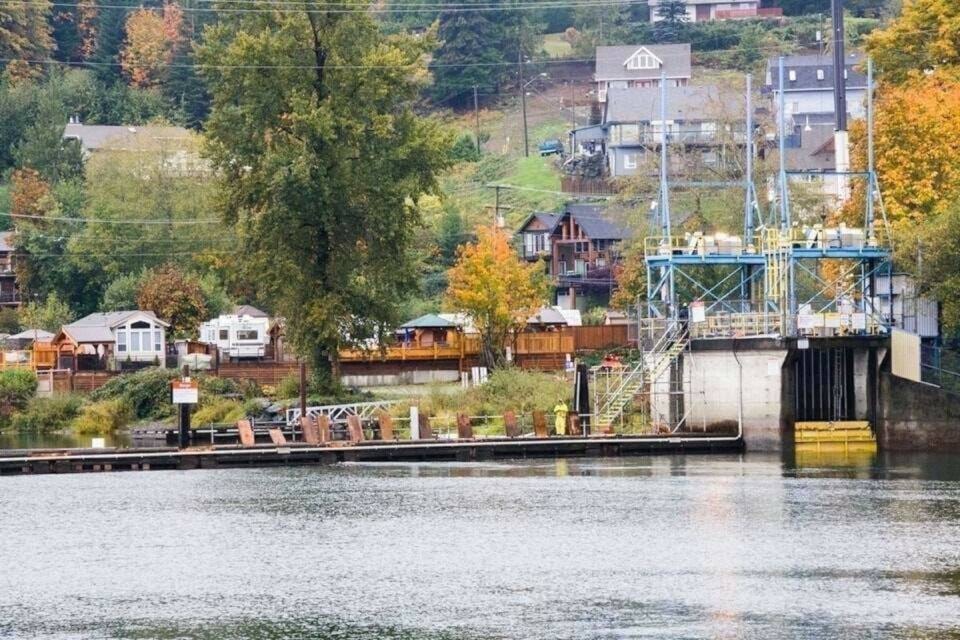The cold, wet weather so far this spring has been good for water levels in Lake Cowichan.
Brian Houle, the environment manager at the Catalyst Crofton mill which owns and operates the weir at Lake Cowichan, said that with the lake already full, recent April rainfall raised the water level in the lake even higher and in response, control gates at the weir were opened to increase river flow from 15 cubic metres a second to 33 cms.
He said that with the rainfall expected to decrease over the coming week, the water level in the lake is expected to again begin to drop so the flow in the river will be reduced by two cubic metres a second each day, down to a minimum flow of 15 cms again, with the objective to hold the lake at 100 per cent full out to June 25.
RELATED STORY: OPERATIONS AT COWICHAN LAKE WEIR BEGIN FOR THE YEAR
“With the water flow rising from 15 cms to 33 cms, many isolated side channels and pools are again connected to the main stem, but in coming weeks, flow reductions will repeat and the process of isolation of pools and side channels will also repeat,” Houle said.
“Our surge in river flow and higher lake levels appears to relate more to the rainfall and less to melting snow pack, but there is some snow melt also helping to raise the lake’s water level. A cold spring will help delay snow melt and if delayed long enough, it is possible to save that water in the lake.”
Volunteers had to act quickly in late April to move stranded young fish near the Stoltz Pool area on Cowichan River back to the river’s main stream from the drying creek beds.
RELATED STORY: VOLUNTEERS HELP STRANDED FISH ON COWICHAN RIVER
The severe drought that struck the region last summer lowered water levels in the Cowichan River dramatically, so Catalyst had to use 20 pumps for more than a month in September and October to pump water over the weir to sustain water levels in the river.
A winter with below average snowpack followed by a drought beginning in mid-May were the root cause of last year’s dry conditions and there are fears of yet another serious drought in 2024.
Catalyst announced in March that it would begin earlier control of the water levels in the lake and river this year to mitigate the impacts of drought conditions which could impact the area again this summer.
